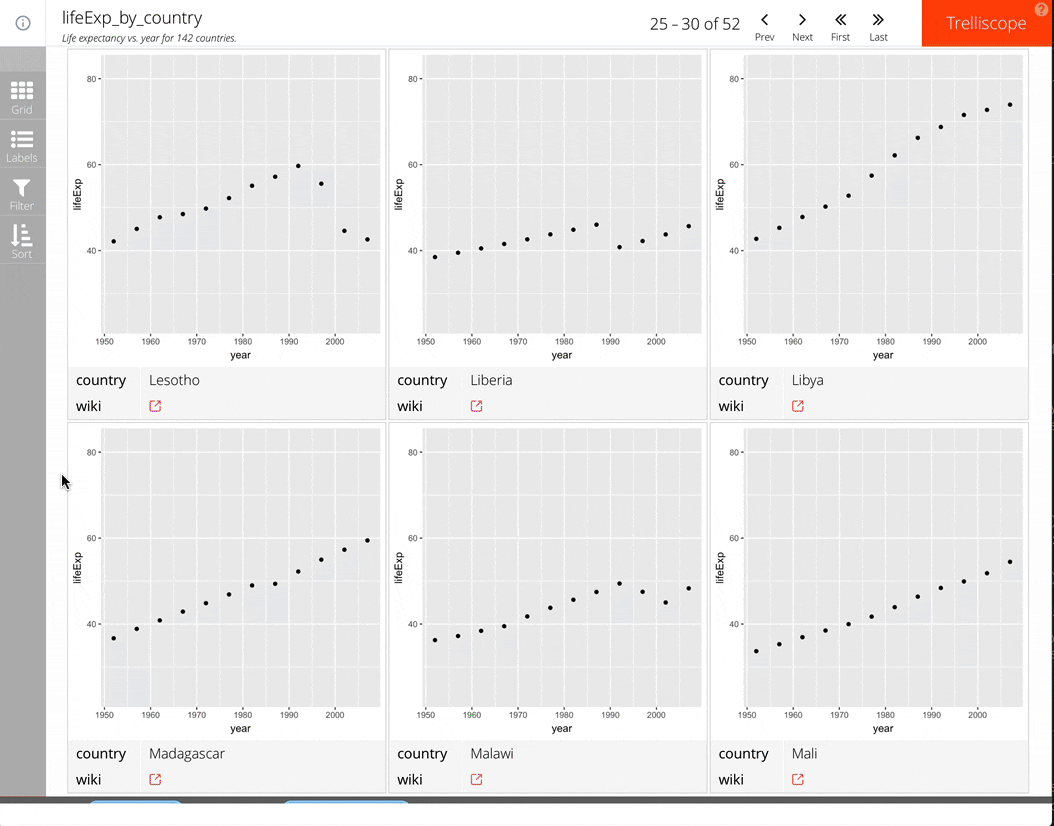Adding your own cognostics
Visualizing Big Data with Trelliscope in R

Ryan Hafen
Author, TrelliscopeJS
New variables as cognostics
All variables in the data passed in to ggplot() are inspected for use as cognostics.
- If the variable is numeric and varies within each panel group, a set of summary statistics is computed for each panel.
- If the variable is constant within each panel group, a single cognostic with that value is computed for each panel.
Latest life expectancy as a cognostic
gap <- gapminder %>% group_by(country) %>% mutate(latestLifeExp = tail(lifeExp, 1))gap
# A tibble: 1,704 x 7
# Groups: country [142]
country continent year lifeExp pop gdpPercap latestLifeExp
<fct> <fct> <int> <dbl> <int> <dbl> <dbl>
1 Afghanistan Asia 1952 28.8 8425333 779 43.8
2 Afghanistan Asia 1957 30.3 9240934 821 43.8
3 Afghanistan Asia 1962 32.0 10267083 853 43.8
4 Afghanistan Asia 1967 34.0 11537966 836 43.8
5 Afghanistan Asia 1972 36.1 13079460 740 43.8
6 Afghanistan Asia 1977 38.4 14880372 786 43.8
# ... with 1,698 more rows
Hyperlinks as cognostics
gap <- gapminder %>%
group_by(country, continent) %>%
mutate(wiki = paste0("https://en.wikipedia.org/wiki/", country))

Customizing custom cognostics
A function cog() can be wrapped around a variable to fine-tune how a cognostic is handled in Trelliscope.
With cog(), some of the most useful things you can specify include:
desc: a meaningful description for the cognosticdefault_label: a boolean specifying whether the cognostic should be shown as a label by default or not
gap$wiki <- cog_href(gap$wiki,
desc = "Link to wikipedia",
default_label = TRUE)
Let's practice!
Visualizing Big Data with Trelliscope in R

